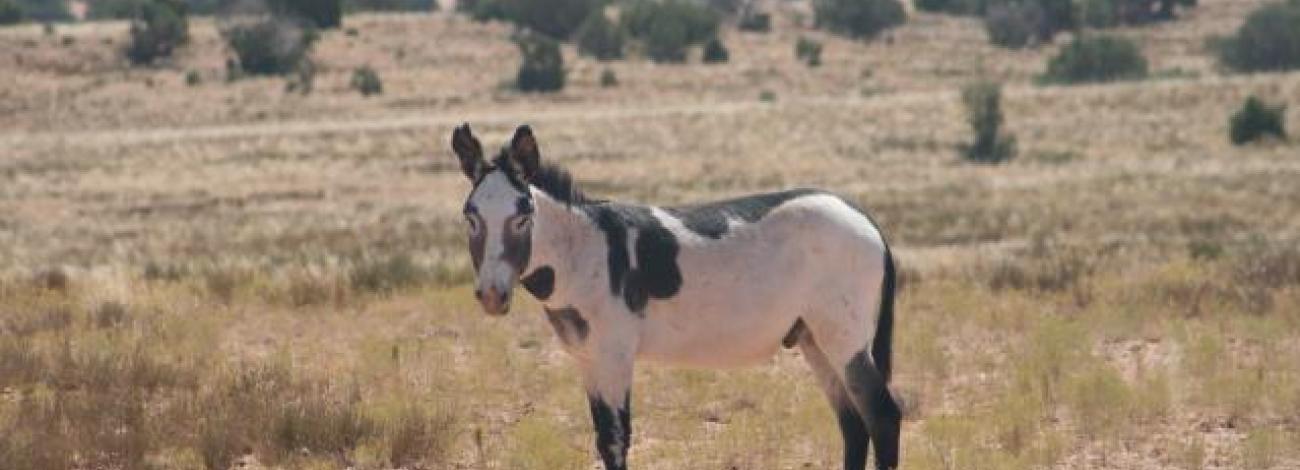
Canyonlands Herd Management Area
Originally wild burros came from the rolling desert hills and sparse vegetation of northern Africa and the Arabian Peninsula. They were utilized for their ability to be great desert pack animals — helping people carry goods across Egypt. Eventually they were domesticated in Europe and brought to North America by Christopher Columbus and others in approximately 1495.
Early prospectors relied heavily on burros as they trekked long distances across the deserts in search of gold and silver. Many of these burros survived, even though their owners perished under the harsh desert conditions. Many more burros escaped or were released during the settlement of the West. The descendent of these burros are many of the burros we see today.
Wild burros have long ears, a short mane and reach a height of up to 5 feet at the shoulders and can range in size from 400 to 500 pounds. There can be a lot of variety in their color, which can range from black, white, brown, grey and pinto; also, they can be striped, spotted or speckled.
Location
Located approximately 60 miles south of Green River in Wayne County, Utah, east of Canyonlands National Park, Horseshoe Canyon and west of Glen Canyon National Recreation Area.
Size
The Canyonlands Herd Management Area is comprised of 77,311 BLM acres, 10,465 State acres, and 1,616 NPS acres for a total of 89,392 acres.
Topography/Vegetation
Topography is highly variable, ranging from flat desert grassland with desert shrub and rough terrain, to slightly rolling foothills carved by drainages. Wild burros feed on a variety of plants, including grasses, Mormon tea, palo verde, and plantain. Although some moisture is provided by these plant materials, wild burros must have drinking water throughout the year. They can usually be seen foraging for food during daytime, except for summers, when they will forage only at night and in the early morning.
Wild burros range through a wide variety of desert habitats as long as they are within 10 miles of drinking water and eat an average of 6,000 pounds of forage per burro per year.
Wildlife
A variety of wildlife call the Canyonlands Herd Management Area home including mule deer, coyotes, porcupines, desert cottontails, black-tailed jackrabbits, and many songbirds. A few desert animals are primarily active during the day. These include rock squirrels, antelope squirrels, chipmunks, lizards, snakes, hawks, and eagles.
Appropriate Management Level
The appropriate management level is 60 to 100 animals.
Viewing Opportunities
Follow Interstate-70 to UT-24, go south towards Hanksville and Goblin Valley. At a junction just south of Goblin Valley State Park, turn left (east) toward Hans Flat, heading south on the Robbers Roost Road. Stay left, continuing toward Hans Flat, when the road forks.
Special Travel Conditions
The area is very remote and weather conditions can change abruptly, so 4-wheel drive vehicles are recommended. Special care and extra supplies (including a good map and GPS unit) should be take when traveling to this Herd Management Area due to it’s remoteness.
